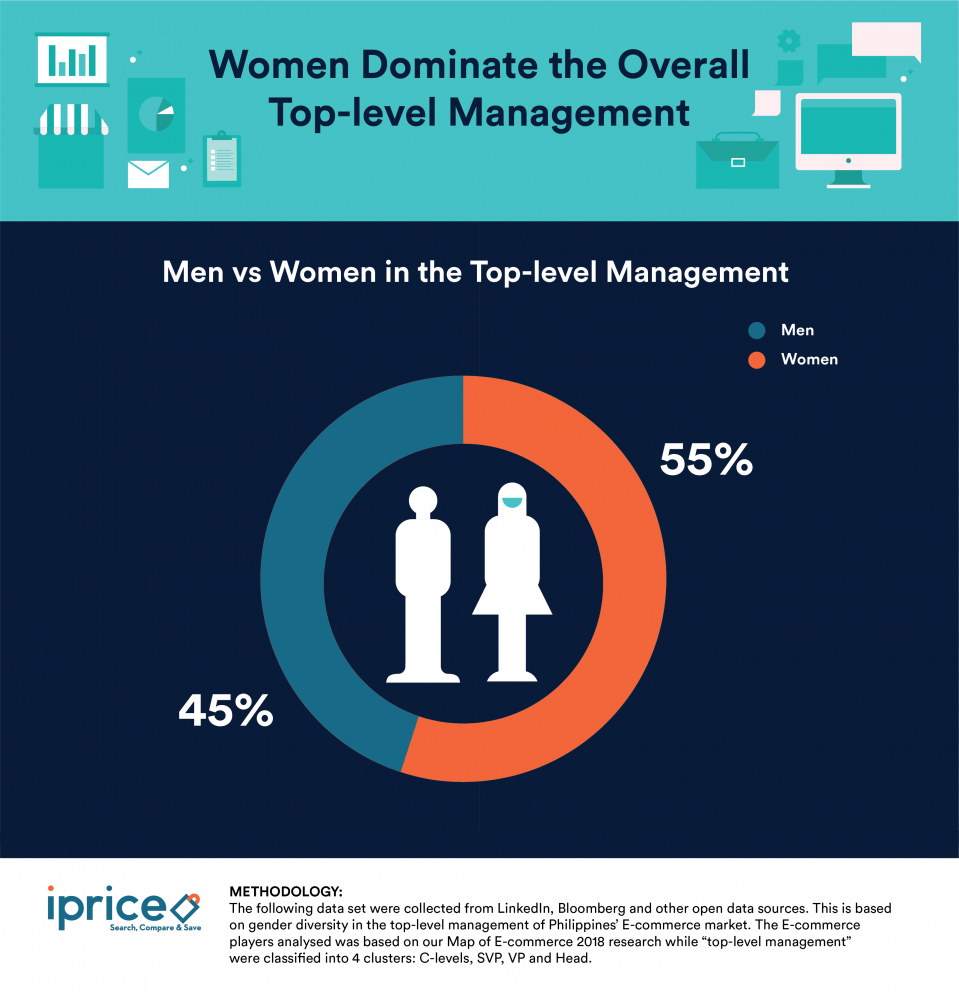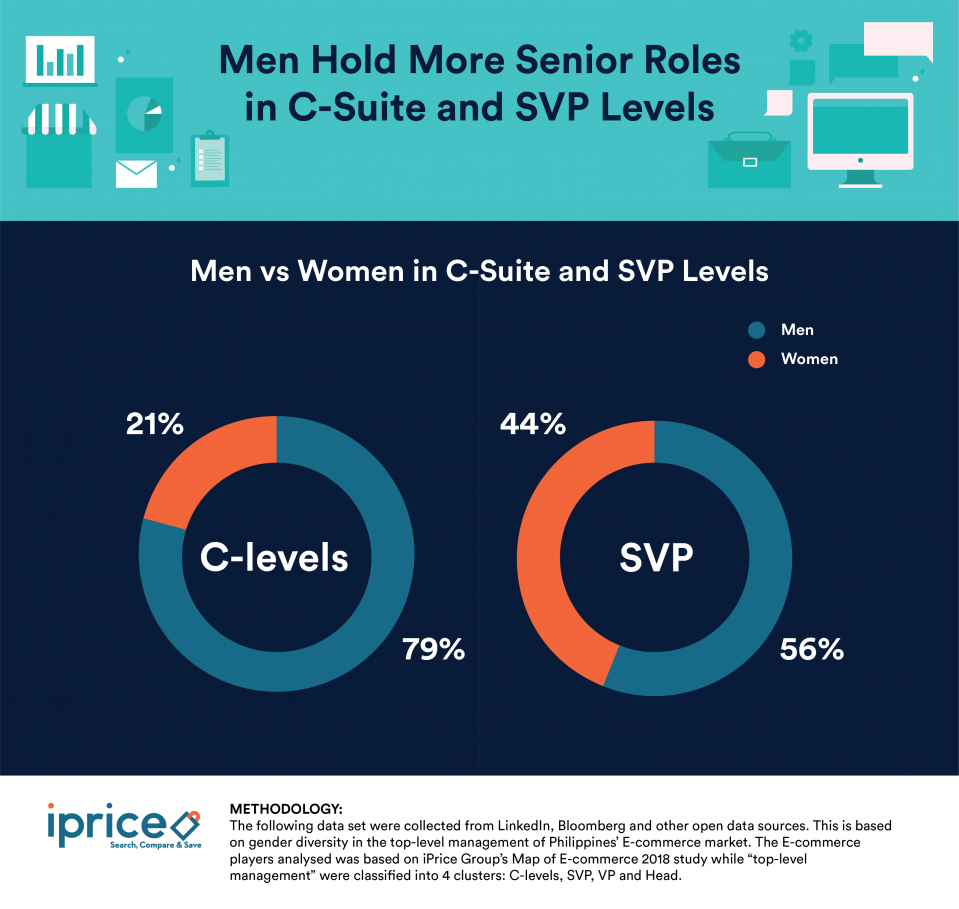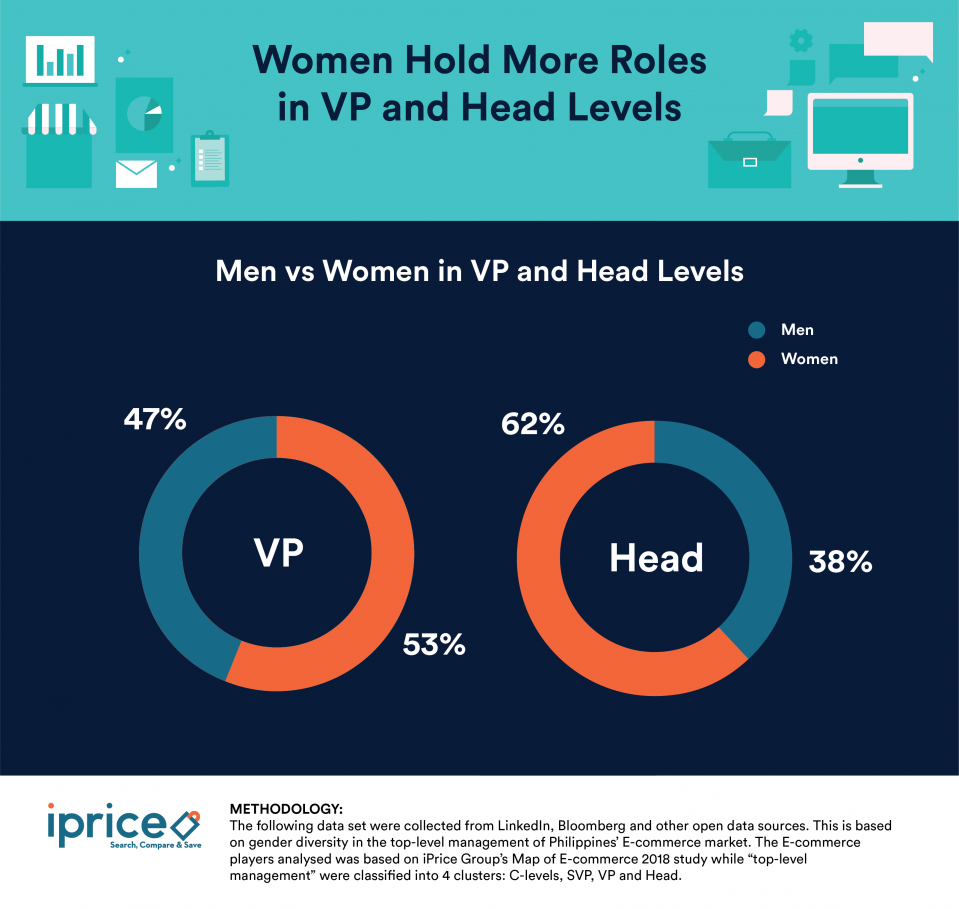Bolstering the role of women in the workplace has become a global issue as gender diversity remains to be a critical economic challenge. The population of women account for about half of the world’s working-age population, and yet it still has not achieve its full economic potential. Unfortunately, Asia Pacific Economies, one of the fastest-growing region in the world, have yet to fully deploy the potential of their respective female population.
According to the McKinsey Global Institute 2018 Report, Asia Pacific Economies have to focus on targeted policies to improve women’s equality which could fuel $4.5 trillion to the region’s combined annual gross domestic product by 2025, or 12 percent better than if the status quo were maintained. Philippines, the most gender-equal in the region, is projected to expand by as much as $40 billion by 2025 if it can bring more poor and less-educated women into the workforce.
As more businesses continue to shift in technology, iPrice Group conducted a market niche research analysing the top-level management of the Philippines’ biggest E-commerce. Our aim is to determine the extent of gender diversity for each four career levels as identified: C-Levels, Senior Vice President, Vice President and Heads. Our study finds that women hold more positions in the overall top-level management than men while senior roles: SVP and C-Suite are more common in men.
I. Women Dominate the Overall Top-Level Management

After examining Philippines’ Biggest E-Commerce (based from iPrice Group Map of E-commerce findings), women dominate the overall top-level management positions by only 10%. The population of women comprise an average of 55% in PHL E-commerce top-level management, surpassing the global average of 24%(based from Grant Thornton research 2018)
According to the annual Global Gender Gap Index, Philippines has consistently performed as one of the most gender-equal workplace. The country took the helm in South East Asia with the most number of women in leadership, technical and professional roles. The Philippines scored higher than Thailand and Singapore, countries that fall into the upper middle-income to high-income group.
From its last year’s report, Philippines slipped three notches to 10th place, partly due to its performance drop on wage equality, health and survival gender gap, although the nation still fared well in the political empowerment of women specifically on women handling managerial and executive positions and labour force participation.
The rationale for this phenomenon is the general upward mobility of women in the Philippines which makes its talent pool more robust. The Philippines legislature passed the Magna Carta of Women Act in 2009, which promotes gender equality in government by mandating quotas for the proportion of women in government jobs. It also empowers the state to take measures to encourage gender diversity in the private sector, though it stops short of mandated quotas.
II. Men Hold More Senior Roles In C-Suite and SVP Roles

While the overall population of women in the workplace dominates men, it is surprising that men still have more authority as they hold the most number of roles in C-Suite and SVP roles. In the 2 senior top-level management, the career ladder pattern becomes steep for women as the distribution of men become more pronounced. In the C-levels, which comprises of Executives, Directors, President and Chief Officers, the lead of men is 58% more than women while SVP (Senior Vice President), has 14% more men than women.
Women hold 44% of the SVP-level (Senior Vice President) roles whereas women take up 44%. At the highest management positions, the C-levels, women make up 21% while men are at 79%. This brings us into the prevalent pipeline problem indicating lesser women on higher management.
III. Women Hold More Roles in VP and Head Levels

While the population distribution became increasingly male in senior roles, women hold more roles in the VP-level and Head-level. The percentage of men and women in Head-level are 38 percent and 62 percent respectively. For VP-level, the percentage of men and women are 47 percent and 53 percent respectively. Hence, there are more women in VP-level and Head-level by 6 percent and 24 percent which is particularly smaller than the lead of men in SVP-level and C-Levels. Meanwhile, there is a positive result in SVP-level and VP-level as the distribution of men and women stand close with only 14 percent and 6 percent difference.
Overall, the plan in achieving women’s economic empowerment (to address gender gap in the workplace) has a strong global framework with dedicated economic programs such as adoption of the 2030 Agenda, the Addis Ababa Action Agenda and the 10-year review of the World Summit on Information Society. Currently, UN Women and International Telecommunication Union created an action plan to close digital gender gap which is integral in achieving the Agenda 2030.



![[Research Round-Up] New Study Shows the Continuing Value of B2B Thought Leadership](https://customerthink.com/wp-content/uploads/development-2010010_1280-pixabay-innovation-ideas-think-1-218x150.jpg)